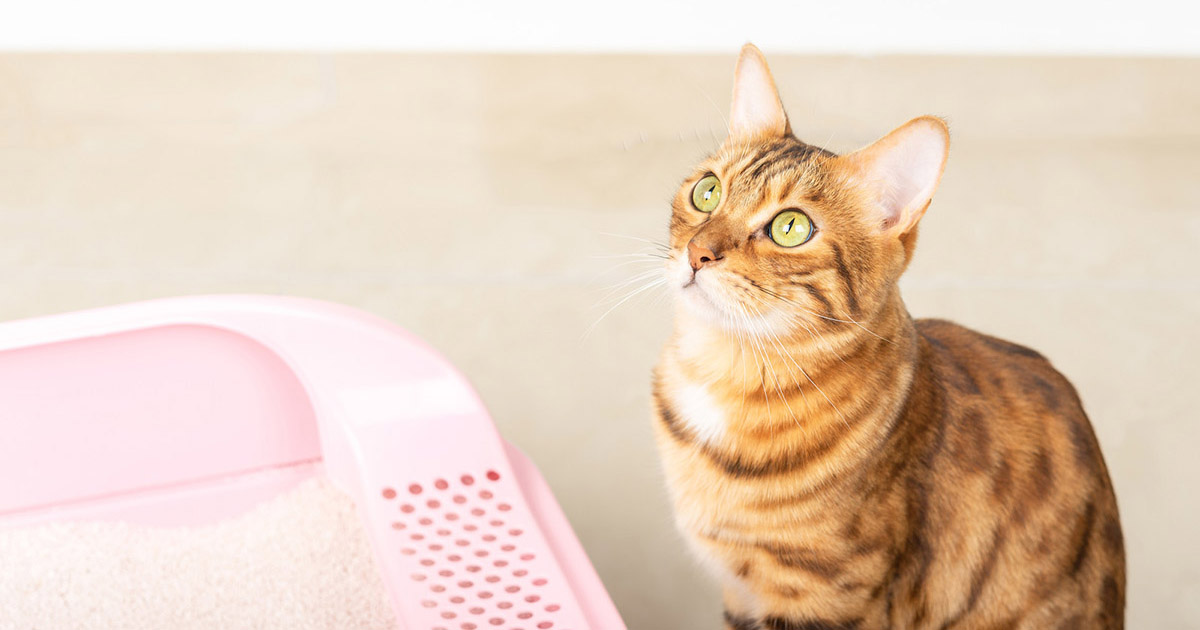The Dangers of Flushing Cat Poop Down Your Toilet - Advice for Better Handling
The Dangers of Flushing Cat Poop Down Your Toilet - Advice for Better Handling
Blog Article
This article below about Can You Flush Cat Poo or Litter Down the Toilet? is fairly fascinating. Don't miss out on it.

Introduction
As pet cat owners, it's essential to bear in mind how we take care of our feline good friends' waste. While it may seem convenient to flush pet cat poop down the toilet, this method can have detrimental repercussions for both the setting and human health.
Ecological Impact
Purging cat poop introduces dangerous virus and parasites into the water system, posturing a significant risk to aquatic communities. These pollutants can adversely affect aquatic life and concession water quality.
Wellness Risks
Along with ecological issues, purging cat waste can also posture health risks to human beings. Pet cat feces might include Toxoplasma gondii, a parasite that can cause toxoplasmosis-- a potentially extreme ailment, specifically for expecting women and people with weakened immune systems.
Alternatives to Flushing
Fortunately, there are more secure and much more liable methods to throw away cat poop. Take into consideration the complying with choices:
1. Scoop and Dispose in Trash
The most common approach of taking care of cat poop is to scoop it right into an eco-friendly bag and throw it in the trash. Make certain to make use of a devoted trash inside story and dispose of the waste quickly.
2. Use Biodegradable Litter
Select eco-friendly pet cat litter made from products such as corn or wheat. These litters are environmentally friendly and can be safely gotten rid of in the trash.
3. Bury in the Yard
If you have a yard, consider burying pet cat waste in a marked location away from vegetable gardens and water resources. Make sure to dig deep sufficient to prevent contamination of groundwater.
4. Install a Pet Waste Disposal System
Buy a family pet waste disposal system especially created for cat waste. These systems make use of enzymes to break down the waste, minimizing odor and ecological impact.
Verdict
Accountable pet ownership expands beyond giving food and sanctuary-- it additionally includes appropriate waste administration. By avoiding purging feline poop down the commode and choosing different disposal methods, we can decrease our ecological footprint and safeguard human wellness.
Why Can’t I Flush Cat Poop?
It Spreads a Parasite
Cats are frequently infected with a parasite called toxoplasma gondii. The parasite causes an infection called toxoplasmosis. It is usually harmless to cats. The parasite only uses cat poop as a host for its eggs. Otherwise, the cat’s immune system usually keeps the infection at low enough levels to maintain its own health. But it does not stop the develop of eggs. These eggs are tiny and surprisingly tough. They may survive for a year before they begin to grow. But that’s the problem.
Our wastewater system is not designed to deal with toxoplasmosis eggs. Instead, most eggs will flush from your toilet into sewers and wastewater management plants. After the sewage is treated for many other harmful things in it, it is typically released into local rivers, lakes, or oceans. Here, the toxoplasmosis eggs can find new hosts, including starfish, crabs, otters, and many other wildlife. For many, this is a significant risk to their health. Toxoplasmosis can also end up infecting water sources that are important for agriculture, which means our deer, pigs, and sheep can get infected too.
Is There Risk to Humans?
There can be a risk to human life from flushing cat poop down the toilet. If you do so, the parasites from your cat’s poop can end up in shellfish, game animals, or livestock. If this meat is then served raw or undercooked, the people who eat it can get sick.
In fact, according to the CDC, 40 million people in the United States are infected with toxoplasma gondii. They get it from exposure to infected seafood, or from some kind of cat poop contamination, like drinking from a stream that is contaminated or touching anything that has come into contact with cat poop. That includes just cleaning a cat litter box.
Most people who get infected with these parasites will not develop any symptoms. However, for pregnant women or for those with compromised immune systems, the parasite can cause severe health problems.
How to Handle Cat Poop
The best way to handle cat poop is actually to clean the box more often. The eggs that the parasite sheds will not become active until one to five days after the cat poops. That means that if you clean daily, you’re much less likely to come into direct contact with infectious eggs.
That said, always dispose of cat poop in the garbage and not down the toilet. Wash your hands before and after you clean the litter box, and bring the bag of poop right outside to your garbage bins.
https://trenchlesssolutionsusa.com/why-cant-i-flush-cat-poop/

Do you enjoy more info about Don’t flush cat feces down the toilet? Create feedback down below. We'd be glad to hear your thoughts about this write up. We hope that you come back again in the near future. Do you know somebody else who is in the market for the subject? Do not hesitate to promote it. We cherish reading our article about How to Dispose of Cat Poop and Litter Without Plastic Bags.
Schedule Estimate Report this page